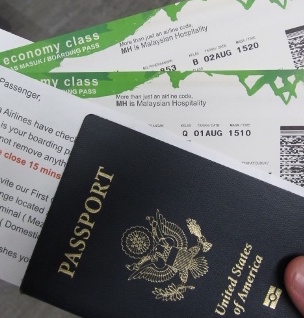What Living on $20 a Day Looks Like
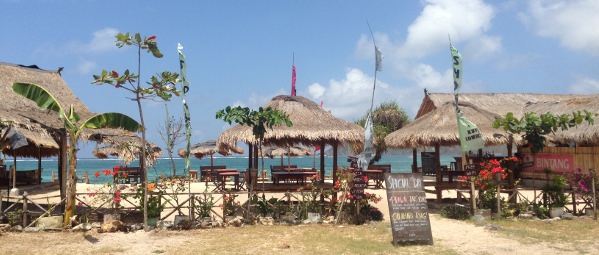
One of the biggest surprises about long-term travel is just how cheap it can be.
In my second year of college I’ll never forget the price-sheet my dad brought back from Utila, Honduras. To this very day you can still get a room on the water for $5 a night and a meal for $2.
Before leaving home I’d heard things like this but it’s hard to believe until you see it first-hand:
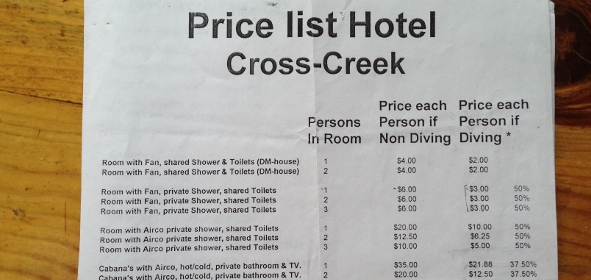
Is it really possible to live cheaply and be comfortable, or is this a gimmick?
When I sat down to write this post I’d been living for 2 months on about $20 per day, or between $600-$700 per month. The general response when I tell friends about this is, “No way. You can’t be including big purchases like airline tickets or health insurance. Or you’re talking about really roughing it.”
But the reality is, I’m not. There are many places where you can live like a king for very little if you choose to.
Generally when I talk about daily budgets I mean money set aside for daily spending after overhead (airline tickets, health insurance, etc). The key is to keep overhead low and then average it out over as long a time period as possible. In the places listed here you can live, overhead included, for $20 a day. Bump your budget up to $50 a day, live on $20, and you’ll be living like a boss.
A few general rules for traveling cheaply:
- Location is key. If you haven’t traveled much you can’t imagine how affordable some places are compared to the average American city. It only sinks in when you’ve lived in a place for a few weeks and realize you’ve spent less than a night out in San Francisco.
- The speed of travel often dictates the cost. If you have to buy a plane ticket every week, things get expensive. If you buy one every few months, the cost averages out over a longer time period and won’t impact your budget as much. This is one reason why vacation travel is so expensive, but it’s a mistake to assume all travel is like this. In the examples here, the ticket was done and paid for in the previous month, but since I typically use airline miles for everything it doesn’t really matter.
- Keep your fixed overhead as low as possible. I don’t have many ongoing fixed expenses, maybe $50 / mo at the time I stayed in these places. Things like health insurance (cheap traveler’s only), car insurance (dropped to lowest tier), renter’s insurance, and a phone line I suspended are surprisingly cheap and tend to get paid for by budget surpluses anyway. This is part of why it’s important to always estimate a 20-30% margin of error on how much you think things will cost (e.g. estimate $50 per day but only spend $20-$30).
- You don’t have to slum it, but don’t sell yourself short. Only you can decide the level of survival you’re willing to accept, but there are some really nice hostels out there. There are also some places where you can rent a nice apartment for $1800 a year. But I’ve learned that I’m happy indefinitely as long as I have a hot shower, good coffee, and can sleep enough. I’ll never understand why anyone needs to pay $50 a night for a bed with 18 pillows and a mini-bar that’s too expensive to use. It’s also never made sense to me to seal yourself off from other travelers and locals in an expensive hotel room.
So what does living on $20 per day look like?
Here are a few examples from around the world, but it’s by no means a comprehensive list. I’ve only included places where I could reasonable stay for at least 3 weeks (i.e. good livability factor).
#1 Utila Bay Islands, Honduras
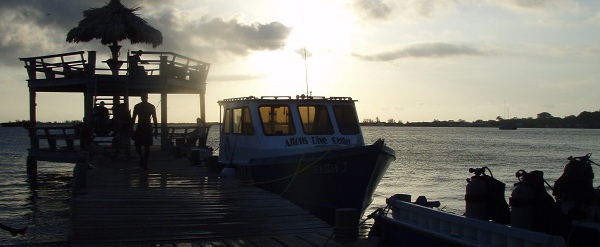
Just about every traveler in Central America gets stuck in Utila, and I can’t blame them: it’s a beautiful Caribbean island, one of the cheapest place on earth to learn to Scuba-dive, and a non-stop party.
It’s also one of the cheapest places I’ve ever been. As I mentioned above, lodging can be had for $5 a night, or free if you’re taking Scuba courses. You can eat for $1-$2 per meal. Drinks cost $1.
Utila does suffer from some livability issues, including heat & humidity that can make sleeping without AC nearly impossible, but you can solve this problem pretty easily.
- Accommodation: $125 ($5 / night minus 5 free nights)
- Transportation: Free (it’s small enough to walk everywhere)
- Food & Groceries: $240 ($8 / day)
- Booze: $90 ($3 / night)
- Scuba Course: $300
Total: $755
If you want to come in an at exactly $20 per night, drink less. Here’s what the view of my porch looked like, for $5 a night:
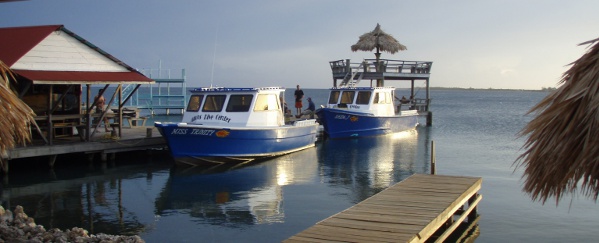
#2 Camping in La Ventana, Baja Mexico
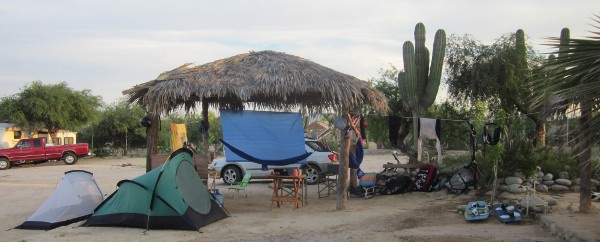
This was our spacious palapa on the Sea of Cortez, in the kiteboarding hotspot of La Ventana. Yep, camping, but car-camping at it’s finest.
In my experience, camping in many places is generally out of the question. In the tropics it’s too hot and sticky (Costa Rica), in a lot of places it’s too dangerous (in terms of theft), and in some places it’s outright illegal to camp where you want (France, if you can believe it. We camped anyway).
So camping is often out, but in La Ventana it’s dry, comfortable, and safe. We had a great setup with a stove, Christmas lights, and even an outdoor refrigerator. Not exactly roughing it.
But it only cost $4.50 for a shared campsite with security and hot showers.
The beach, which was 100′ away, looks like this:
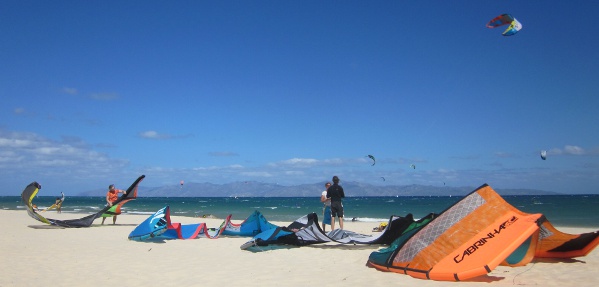
Here’s the monthly cost breakdown of living at the campground in La Ventana:
- Accommodation: $140 ($4.50 / night)
- Transportation: $60 (gas) or free (biking)
- Food & Groceries: $300 (eating out once or twice a day and cooking the rest)
- Misc: $100
- Booze: ?
Total: $600-$700
As always, booze and bars are the wild-cards in the travel budget. Fortunately anywhere south of the US you can get by pretty well on Flor de Cana, which is cheap:

One key about the lack of spending here is that there just isn’t that much to buy. Sure, you could walk out of a kite-boarding shop with $2000 in gear in about 5 minutes, but avoid that and the only thing to buy is food and alcohol.
We could have payed a lot more for an apartment, but I’d rather pocket that, sleep outside, and spend the money on something else. One of the unexpected upsides to spending 75 days in a tent was the health impact: everyone who joined us for a few weeks was surprised to learn just how comfortable they were and how their health improved (e.g. back issues going away, waking up feeling great) by sleeping outside, on the ground. Probably helped that we slept for minimum 10 hours per night, but that’s another story…
#3 Bingin, Bali, and Kuta, Lombok, Indonesia
I got stuck in both of these places, and for good reason. Like many others before me, my first trip to Bali consisted of discovering Bingin and not moving much further. I just couldn’t get out of the hammock.
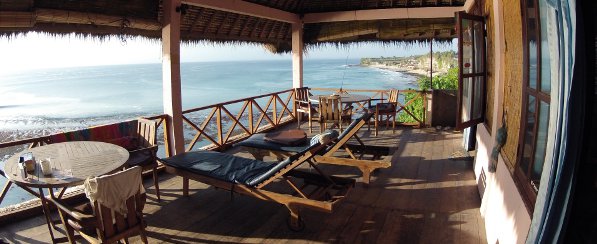
Rarely while traveling do you have everything you need in one place, but Bingin is like an all-inclusive surfer resort.
Except that it only costs about $10-$15 a day to stay there. Total.
I shared a room overlooking the surf,which stretches from Uluwatu to Dreamland,and is close enough to Bingin to actually watch people get barreled without so much as adjusting my position in the hammock.
Accommodation in Bali mostly consists of guest houses, so private rooms with one or two beds. Cooking is generally not an option, and food is so cheap (you can get a meal for $1.50-$3) that it usually doesn’t make sense.
Lombok is similar. I paid more for accommodation (~$10/night) but that included breakfast and unlimited coffee. It also had good wifi and hot showers (amazing). Food was cheaper than Bali, so it all balanced out.
Here is what my ‘villa’ looked like, which was across the street from the beach:
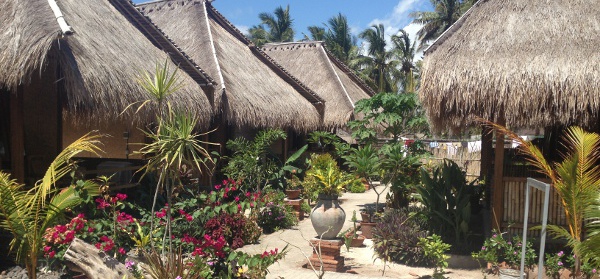
Here’s a monthly cost breakdown for these wonderful places:
- Accommodation: $150-$300 ($5-$10 / night)
- Transportation: $50 / month for the motor-bike and probably $40 / month for gas
- Food & Groceries: $150-300 ($10 per day or less. Approx $1-$3 per prepared meal)
- Misc: $100
- Booze: Close to $0
Total:~$450-$750 a month
#4) Mancora, Peru
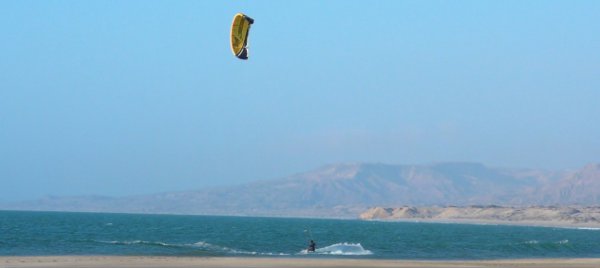
Another great beach town, surf, kitesurf, and general backpacker favorite, and a place where you can get live well on less than $20 per day.
I stayed at the Kokopeli hostel, across the street from what first appears to be an all-inclusive beach resort. It turns out that’s just another hostel (Loki) where you can stay for $10 a night (if you don’t care about sleeping).
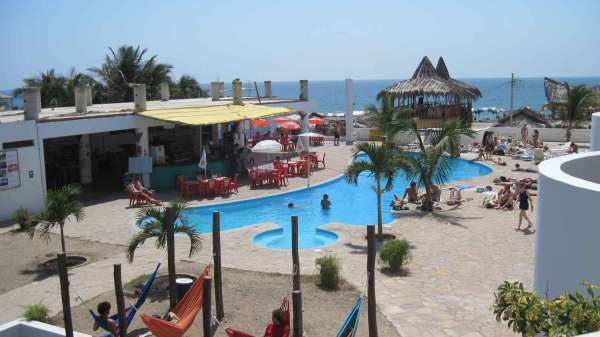
Accommodation in a really nice shared room was $9 night, including breakfast. I heard on the grapevine that a private apartment with all the amenities wouldn’t set you back more than $150-$200 a month.
Cooking also wasn’t necessary since the food in Peru is also incredibly cheap-$2 for an awesome menu del dia plate.
Here’s a monthly cost breakdown of living in Mancora:
- Accommodation: $270 ($9 / night)
- Transportation: $20 / month (walking, or the occasional bus to Los Lobitos)
- Food & Groceries: $180 ($6 / day at $2 per meal)
- Booze: $180 ($6 / day)
Total: ~$650 a month
Mancora, Chiang Mai, and Bali/Lombok were the only places where I could eat out 3 squares a day, buy a few beers, pay for a room, and still come in under $20 per day.
#5) Bicycle-Touring, France
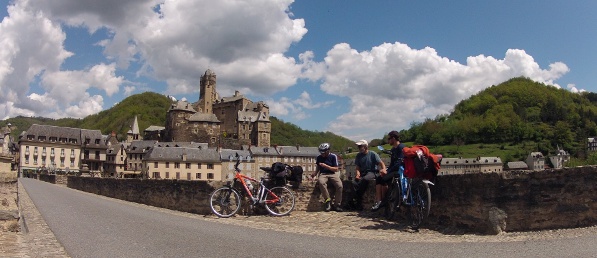
You can imagine my surprise when a month in France turned out to be one of the cheapest months ever.
For 14 days we cycled on the Chemin de St. Jacques, which is the old pilgrimage trail that spiders from every corner of Europe to Santiago de Compestela in Spain.
Cycling is one of the best ways to see Europe for two reasons: you get to see a tremendous amount of countryside and this often gives you a truer sense of what a country is about. Small villages, castles (we stumbled into a renaissance day, no joke), and lots of open space.
And second, if you like to eat, cycling will give you a never-ending appetite for the local cuisine.
Along the way we sometimes camped but primarily stayed in what are called ‘gites’, which are cheaper-than hostel accommodations, often in old monasteries or reclaimed buildings along the Pilgrimage route. If you think shared accommodation is just for kids, think again: the average age here hovered in the 50s.
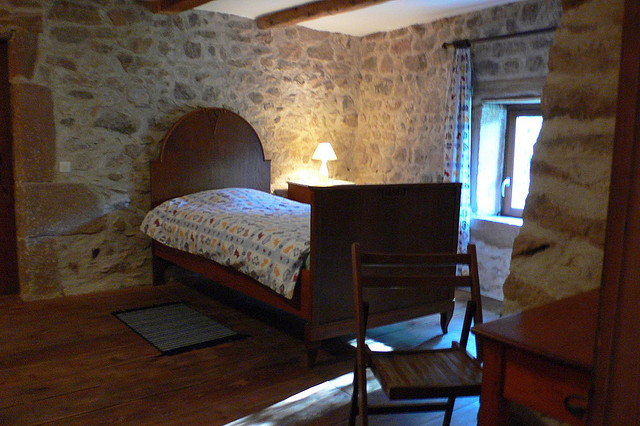
Despite the excessive amount of food consumed, the month in France was extremely affordable:
Before and after the ride:
- Transportation: $160 (TGV to / from Chemins du Saints Jacuqes)
- Accommodation: $0 (Stayed with friend)
- Food & Groceries: $140 ($10 / day)
During the ride:
- Accommodation: $105 ($5-10 / night)
- Food & Groceries: $280 ($15-20 / day)
Total:~$685 a month
#7) Chiang Mai, Thailand
There are about 50 posts on how to live in Chiang Mai for $500 a month, so I won’t repeat the whole breakdown. Needless to say, you can rent a decent apartment here for a little over $1800 a year (that’s about $152 a month). Here’s a picture of my somewhat posh apartment ($350 a month) where I posted up for a month to work:
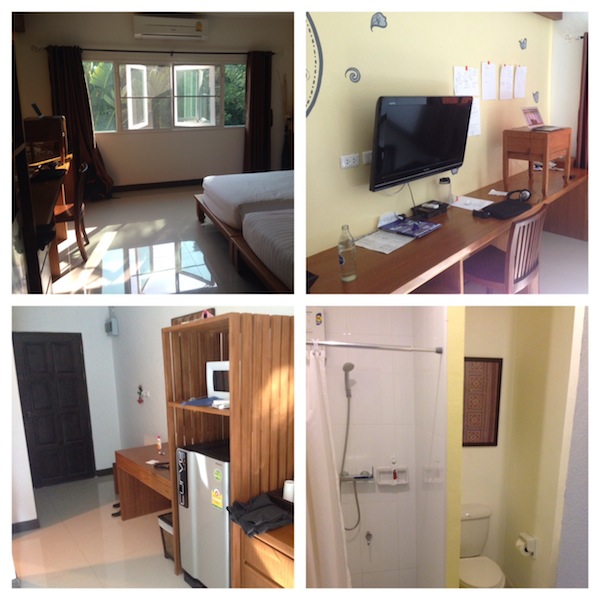
A few posts on the cost of living in Chiang Mai:
- How to live in Chiang Mai for $500 a month – from my friend John at JetSetCitizen
- Cost of Living in Chiang Mai – from AlittleAdrift
- Living Luxuriously in Chiang Mai – Slightly more baller example from NeverEndingVoyage
Travel Cheaply, Travel Forever
While these are great examples of exceptionally cheap-living, I was able to come in at $30-$40 per day in almost every place I’ve traveled to, including really expensive destinations in Europe. The key is not being afraid of Hostels, moving slowly, and keeping a sharp eye on expenses.
Is my goal to live as cheaply as possible? Not necessarily, but it’s a good exercise to force yourself to live on a strict budget, and I hate paying excessive amounts for the basics when it’s not really required. If you’re living simply in a beautiful place you don’t need much to enjoy it anyway.
Want to travel for a long time? If you’re living on a fixed budget you can double your travel time but living like this. Back in 2011 I originally slated $1500 a month for traveling. Living on $650 a month means I could go twice as long before hitting the bottom of the barrel.
I know there are a lot more places in the world where you can live well for very little, and I’m looking forward to discovering them (I’m currently working my way around the rest of SE Asia). Hit me up with your favorite spot.


